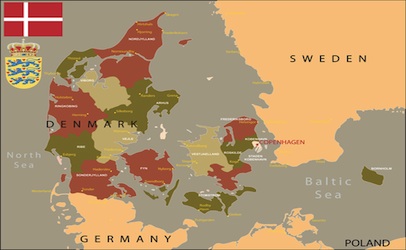Every other Salmonella infection recorded in Denmark in 2014 came from overseas travel. Trips to Thailand (17.5 percent), Turkey (15.4 percent) and Spain (6.4 percent) were the most common destinations for traveling Danes to pick up a Salmonella infection.  Those were among the findings of an annual report Denmark publishes on the occurrence of diseases that can be transmitted from animals and food to humans. The report is a joint product of the National Food Institute at the Technical University of Denmark and the Statens Serum Institut, the Danish National Institute of Public Health, and the Danish Veterinary and Food Administration. in addition to finding that foreign travel was the largest source of Salmonella infections, causing about 48 percent of the illnesses, the annual report found that Campylobacter caused the most foodborne bacterial illnesses in Denmark in 2014, totaling 3,782 cases. Denmark recorded 92 Listeria infections during 2014, an 84-percent increase over the previous year. A single Listeria outbreak involving a Danish spiced meat roll called “rullepølse” was responsible for 41 of the increased cases, the report noted. The Nordic country, with a population of just over 5.6 million, experienced 60 outbreaks of foodborne illnesses during 2014, down from 74 during the previous year. About 40 percent of these were Norovirus outbreaks connected to restaurants. The report states that 363 people were sickened in 24 Norovirus outbreaks from dining out. Salmonella infections accounted for 19.9 illnesses for every 100,000 inhabitants in Denmark in 2014, another historically low number and rate. Infections from chicken meat came in at 2 percent, after three years of remaining at zero. “For two decades, Danish producers, authorities and researchers have successfully worked hard to make fresh chicken Salmonella-free,” says Birgitte Helwigh, senior academic officer at the national Food Institute. “It is not allowed to sell fresh meat from Danish chickens if the flock is positive for Salmonella.” Helwigh said a small risk remains that fresh chicken contaminated with Salmonella might escape “the surveillance radar,” which is why close monitoring must continue. The 2014 Salmonella outbreak from Danish eggs was the first of its kind in five years.
Those were among the findings of an annual report Denmark publishes on the occurrence of diseases that can be transmitted from animals and food to humans. The report is a joint product of the National Food Institute at the Technical University of Denmark and the Statens Serum Institut, the Danish National Institute of Public Health, and the Danish Veterinary and Food Administration. in addition to finding that foreign travel was the largest source of Salmonella infections, causing about 48 percent of the illnesses, the annual report found that Campylobacter caused the most foodborne bacterial illnesses in Denmark in 2014, totaling 3,782 cases. Denmark recorded 92 Listeria infections during 2014, an 84-percent increase over the previous year. A single Listeria outbreak involving a Danish spiced meat roll called “rullepølse” was responsible for 41 of the increased cases, the report noted. The Nordic country, with a population of just over 5.6 million, experienced 60 outbreaks of foodborne illnesses during 2014, down from 74 during the previous year. About 40 percent of these were Norovirus outbreaks connected to restaurants. The report states that 363 people were sickened in 24 Norovirus outbreaks from dining out. Salmonella infections accounted for 19.9 illnesses for every 100,000 inhabitants in Denmark in 2014, another historically low number and rate. Infections from chicken meat came in at 2 percent, after three years of remaining at zero. “For two decades, Danish producers, authorities and researchers have successfully worked hard to make fresh chicken Salmonella-free,” says Birgitte Helwigh, senior academic officer at the national Food Institute. “It is not allowed to sell fresh meat from Danish chickens if the flock is positive for Salmonella.” Helwigh said a small risk remains that fresh chicken contaminated with Salmonella might escape “the surveillance radar,” which is why close monitoring must continue. The 2014 Salmonella outbreak from Danish eggs was the first of its kind in five years.
(To sign up for a free subscription to Food Safety News, click here.)
